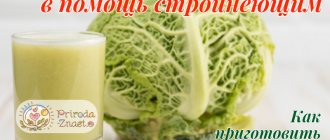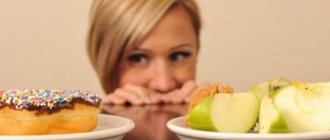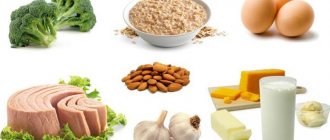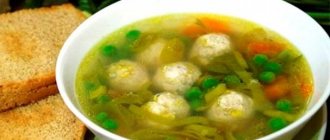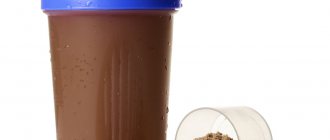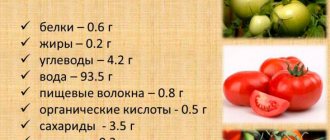The basis of many weight loss diets are vegetable soups or vegetable dishes. This is explained by the fact that these crops, as a rule, are low in calories and contain large amounts of vitamins and other useful substances. This allows us to talk about their mild effect on organs and systems, the absence of hunger during a diet and the improvement of the entire body.
Cabbage is included in fasting menus due to its unique properties. This vegetable contains a sufficient amount of protein, which means it satisfies well. Dishes made from cabbage also have beneficial properties.
What are the benefits of dietary cabbage soup?
Firstly, this is the first course, which means that the body will receive boiled semi-liquid food that is well and quickly absorbed by the intestines. Secondly, it has a fat burning effect. Subcutaneous and internal fat in cells dissolves thanks to substances contained in cabbage that accelerate this process. Losing kilograms happens quite quickly: within a week you can become 7-8 kg lighter. Thirdly, a diet based on cabbage soup is easily tolerated. Everyone sets their own dosage and diet.
Thanks to the low calorie content of dietary cabbage soup, you will not gain weight, no matter how much you eat. From 30 kilocalories in one serving there is one benefit.
The essence of the diet is that you need to consume only this soup three times a day. Some products are still allowed with it, but more on that later.
Cabbage soup for weight loss

How to cook Cabbage Soup for Weight Loss
- Chop the cabbage in any shape (you can coarsely), put it in boiling water (put a saucepan with water in advance to heat up).
- Immediately add rice and cook for 15 minutes.
- Add finely chopped carrots and onions. Cook for another 5 minutes.
- Add finely chopped pepper and celery.
- Grate the tomato and add to the soup. Cook for another 5 minutes.
- Before serving, garnish with chopped herbs.
If your child is overweight, then you should give him cabbage soup to try. An adult can eat this soup even every day, but you should also add dietary meat and, if possible, fruits and other healthy ingredients to your diet, because losing weight should be comfortable for your health.
There is no need to add salt and pepper to the soup. The purpose of this soup is to remove excess fluid and relieve minor swelling.
- Cabbage - 300 gr.
- Onion - 70 gr.
- Bell pepper (to taste) - 20 gr.
- Tomato - 20 gr.
- Celery (stem) - 20 gr.
- Rice - 20 gr.
- Water - 1 l.
- Carrots (to taste) - 20 gr.
- Greens (for serving) - 2 gr.
Nutritional value of the dish “Cabbage soup for weight loss” (per 100 grams):
Source
Permitted and prohibited products
In addition to the mentioned dietary soup, your diet can include still mineral water, various juices made from fresh vegetables, fruits or combinations thereof. Tea or coffee lovers can rejoice, these drinks are allowed, but without sugar.
Taboo foods are flour products (bread, buns and other baked goods), alcoholic drinks and sweets.
In addition, as an addition to cabbage soup and to diversify your diet, you can consume one of the following products daily (one product per day). This could be a baked potato with 1 tsp. vegetable oil (preferably olive), 400 g of cooked meat or fish (chicken, lean beef, veal or lean fish), boiled, grilled, baked or steamed vegetables, fruits, excluding persimmons, grapes, bananas.

Principles of the cabbage soup diet
As already mentioned, the main dish of the diet, which lasts 7 days, is cabbage soup. Recipes for its preparation will be discussed below, but now let’s talk about the rules of the diet.
By the way: Bonn soup for weight loss
Soup should be eaten at least 2-3 times a day, adding certain products to the daily diet, the composition of which and the order by day must be strictly observed:
- soup and fruit (except bananas and grapes);
- soup and green vegetables (except legumes);
- soup, any vegetables and fruits (except potatoes and bananas);
- soup, any vegetables and fruits (except potatoes), and 1 banana and a glass of skim milk are allowed;
- soup, boiled chicken breast and tomatoes (preferably fresh);
- soup, boiled beef and any leaf salads;
- soup, brown rice (boiled), any vegetables and freshly squeezed fruit juices.
To diversify the menu throughout the week, cabbage soup should be prepared according to different recipes. We present you with basic options, and you can change them to your taste by combining or adding ingredients.
Cabbage soup recipe
To prepare this vitamin dish, cut a small head of cabbage into thin strips. Also chop green onions (1 bunch) and 5-6 onions. Sweet bell pepper will also come in handy. You need to take 2 pieces. For even greater benefits and saturation with vitamins, celery (several stalks) will be useful. To add flavor and color to the soup, take tomatoes (8 pcs.). Of course, spices will add piquancy to the soup: salt, pepper, parsley, curry, dill, cumin, coriander.
All vegetables and green crops need to be chopped, add tomatoes and cook for half an hour over low heat. After this, take brown rice (1 cup) and boil it separately, then combine with vegetables. Try to use salt to a minimum - the less the better, as long as it is edible for you. At the end of cooking, add your favorite spices.
Each time you prepare a new batch of soup, use a different type of cabbage for variety: broccoli, Brussels sprouts, cauliflower. Beat the finished soup in a blender. Save the rice for second. You can add peas, garlic, carrots, and green beans to the soup.
Try to cook this dish, and after a while it will make you beautiful and slim.
Recipe Soup with cabbage. Calorie, chemical composition and nutritional value.
Nutritional value and chemical composition of Cabbage Soup.
The table shows the nutritional content (calories, proteins, fats, carbohydrates, vitamins and minerals) per 100 grams of edible portion.
| Nutrient | Quantity | Norm** | % of the norm in 100 g | % of the norm in 100 kcal | 100% normal |
| Calorie content | 28.8 kcal | 1684 kcal | 1.7% | 5.9% | 5847 g |
| Squirrels | 2.4 g | 76 g | 3.2% | 11.1% | 3167 g |
| Fats | 1.1 g | 56 g | 2% | 6.9% | 5091 g |
| Carbohydrates | 2.3 g | 219 g | 1.1% | 3.8% | 9522 g |
| Organic acids | 0.1 g | ~ | |||
| Alimentary fiber | 0.4 g | 20 g | 2% | 6.9% | 5000 g |
| Water | 92.4 g | 2273 g | 4.1% | 14.2% | 2460 g |
| Ash | 1.306 g | ~ | |||
| Vitamins | |||||
| Vitamin A, RE | 74.1 mcg | 900 mcg | 8.2% | 28.5% | 1215 g |
| alpha carotene | 0.507 mcg | ~ | |||
| beta carotene | 0.458 mg | 5 mg | 9.2% | 31.9% | 1092 g |
| beta Cryptoxanthin | 0.862 mcg | ~ | |||
| Lutein + Zeaxanthin | 17.594 mcg | ~ | |||
| Vitamin B1, thiamine | 0.047 mg | 1.5 mg | 3.1% | 10.8% | 3191 g |
| Vitamin B2, riboflavin | 0.038 mg | 1.8 mg | 2.1% | 7.3% | 4737 g |
| Vitamin B4, choline | 7.37 mg | 500 mg | 1.5% | 5.2% | 6784 g |
| Vitamin B5, pantothenic | 0.106 mg | 5 mg | 2.1% | 7.3% | 4717 g |
| Vitamin B6, pyridoxine | 0.111 mg | 2 mg | 5.6% | 19.4% | 1802 |
| Vitamin B9, folates | 12.897 mcg | 400 mcg | 3.2% | 11.1% | 3101 g |
| Vitamin B12, cobalamin | 0.03 mcg | 3 mcg | 1% | 3.5% | 10000 g |
| Vitamin C, ascorbic acid | 8.55 mg | 90 mg | 9.5% | 33% | 1053 g |
| Vitamin D, calciferol | 0.028 mcg | 10 mcg | 0.3% | 1% | 35714 g |
| Vitamin D3, cholecalciferol | 0.028 mcg | ~ | |||
| Vitamin E, alpha tocopherol, TE | 0.168 mg | 15 mg | 1.1% | 3.8% | 8929 g |
| Vitamin H, biotin | 0.194 mcg | 50 mcg | 0.4% | 1.4% | 25773 g |
| Vitamin K, phylloquinone | 29.4 mcg | 120 mcg | 24.5% | 85.1% | 408 g |
| Vitamin RR, NE | 0.7168 mg | 20 mg | 3.6% | 12.5% | 2790 g |
| Niacin | 0.367 mg | ~ | |||
| Betaine | 0.177 mg | ~ | |||
| Macronutrients | |||||
| Potassium, K | 136.8 mg | 2500 mg | 5.5% | 19.1% | 1827 |
| Calcium, Ca | 30.55 mg | 1000 mg | 3.1% | 10.8% | 3273 g |
| Silicon, Si | 3.649 mg | 30 mg | 12.2% | 42.4% | 822 g |
| Magnesium, Mg | 12.98 mg | 400 mg | 3.2% | 11.1% | 3082 g |
| Sodium, Na | 337.35 mg | 1300 mg | 26% | 90.3% | 385 g |
| Sera, S | 7.2 mg | 1000 mg | 0.7% | 2.4% | 13889 g |
| Phosphorus, P | 29.3 mg | 800 mg | 3.7% | 12.8% | 2730 g |
| Chlorine, Cl | 522.77 mg | 2300 mg | 22.7% | 78.8% | 440 g |
| Microelements | |||||
| Aluminium, Al | 68.3 mcg | ~ | |||
| Bor, B | 14.7 mcg | ~ | |||
| Vanadium, V | 10.95 mcg | ~ | |||
| Iron, Fe | 0.339 mg | 18 mg | 1.9% | 6.6% | 5310 g |
| Yod, I | 1.03 mcg | 150 mcg | 0.7% | 2.4% | 14563 g |
| Cobalt, Co | 1.776 mcg | 10 mcg | 17.8% | 61.8% | 563 g |
| Lithium, Li | 4.789 mcg | ~ | |||
| Manganese, Mn | 0.0723 mg | 2 mg | 3.6% | 12.5% | 2766 g |
| Copper, Cu | 56.32 mcg | 1000 mcg | 5.6% | 19.4% | 1776 |
| Molybdenum, Mo | 3.293 mcg | 70 mcg | 4.7% | 16.3% | 2126 g |
| Nickel, Ni | 0.672 mcg | ~ | |||
| Rubidium, Rb | 36.1 mcg | ~ | |||
| Selenium, Se | 1.411 mcg | 55 mcg | 2.6% | 9% | 3898 g |
| Strontium, Sr | 2.15 mcg | ~ | |||
| Fluorine, F | 11.19 mcg | 4000 mcg | 0.3% | 1% | 35746 g |
| Chromium, Cr | 1.87 mcg | 50 mcg | 3.7% | 12.8% | 2674 g |
| Zinc, Zn | 0.2995 mg | 12 mg | 2.5% | 8.7% | 4007 g |
| Zirconium, Zr | 0.17 mcg | ~ | |||
| Digestible carbohydrates | |||||
| Starch and dextrins | 0.859 g | ~ | |||
| Mono- and disaccharides (sugars) | 1.3 g | max 100 g | |||
| Glucose (dextrose) | 0.105 g | ~ | |||
| Sucrose | 0.199 g | ~ | |||
| Fructose | 0.044 g | ~ | |||
| Essential amino acids | 0.051 g | ~ | |||
| Arginine* | 0.15 g | ~ | |||
| Valin | 0.115 g | ~ | |||
| Histidine* | 0.095 g | ~ | |||
| Isoleucine | 0.105 g | ~ | |||
| Leucine | 0.176 g | ~ | |||
| Lysine | 0.206 g | ~ | |||
| Methionine | 0.049 g | ~ | |||
| Methionine + Cysteine | 0.033 g | ~ | |||
| Threonine | 0.098 g | ~ | |||
| Tryptophan | 0.03 g | ~ | |||
| Phenylalanine | 0.093 g | ~ | |||
| Phenylalanine+Tyrosine | 0.079 g | ~ | |||
| Nonessential amino acids | 0.088 g | ~ | |||
| Alanin | 0.123 g | ~ | |||
| Aspartic acid | 0.2 g | ~ | |||
| Hydroxyproline | 0.011 g | ~ | |||
| Glycine | 0.093 g | ~ | |||
| Glutamic acid | 0.321 g | ~ | |||
| Proline | 0.089 g | ~ | |||
| Serin | 0.094 g | ~ | |||
| Tyrosine | 0.083 g | ~ | |||
| Cysteine | 0.031 g | ~ | |||
| Sterols (sterols) | |||||
| Cholesterol | 4 mg | max 300 mg | |||
| beta sitosterol | 0.845 mg | ~ | |||
| Fatty acid | |||||
| Trans fats | 0.005 g | max 1.9 g | |||
| monounsaturated trans fats | 0.004 g | ~ | |||
| Saturated fatty acids | |||||
| Saturated fatty acids | 0.3 g | max 18.7 g | |||
| 14:0 Miristinovaya | 0.009 g | ~ | |||
| 16:0 Palmitinaya | 0.168 g | ~ | |||
| 17:0 Margarine | 0.002 g | ~ | |||
| 18:0 Stearic | 0.08 g | ~ | |||
| 20:0 Arakhinovaya | 0.001 g | ~ | |||
| Monounsaturated fatty acids | 0.504 g | min 16.8 g | 3% | 10.4% | |
| 16:1 Palmitoleic | 0.018 g | ~ | |||
| 18:1 Oleic (omega-9) | 0.361 g | ~ | |||
| 18:1 cis | 0.263 g | ~ | |||
| 18:1 trans | 0.004 g | ~ | |||
| 20:1 Gadoleic (omega-9) | 0.048 g | ~ | |||
| 22:1 Erucic (omega-9) | 0.085 g | ~ | |||
| Polyunsaturated fatty acids | 0.247 g | from 11.2 to 20.6 g | 2.2% | 7.6% | |
| 18:2 Linolevaya | 0.188 g | ~ | |||
| 18:2 trans isomer, undetermined | 0.001 g | ~ | |||
| 18:2 Omega-6, cis, cis | 0.119 g | ~ | |||
| 18:3 Linolenic | 0.032 g | ~ | |||
| 18:3 Omega-3, alpha-linolenic | 0.005 g | ~ | |||
| 20:2 Eicosadiene, Omega-6, cis, cis | 0.004 g | ~ | |||
| 20:3 Eicosatriene | 0.001 g | ~ | |||
| 20:4 Arachidonic | 0.005 g | ~ | |||
| 22:5 Docosapentaenoic acid (DPA), Omega-3 | 0.001 g | ~ | |||
| Omega-6 fatty acids | 0.2 g | from 4.7 to 16.8 g | 4.3% | 14.9% |
The energy value of cabbage soup is 28.8 kcal.
Primary Source: Created in the application by the user. Read more.
** This table shows the average levels of vitamins and minerals for an adult. If you want to know the norms taking into account your gender, age and other factors, then use the “My Healthy Diet” application.
What are the results of the cabbage soup diet?
The calorie content of cabbage soup is very low. Depending on the amount of water for the same composition of ingredients, it ranges from 6 kcal to 10 kcal per 100 g of dish. Due to the low calorie content and water, the soup turns out to be very light, but it dulls the feeling of hunger well. That's why you can easily lose 3-5 kg of weight in a week. But its main advantage is that the body receives enough vitamins and minerals, and with the help of fiber, the intestines are actively cleansed.
By the way: The 1000 calorie diet
But to get good results, you must comply with the following requirements:
- The drinking regime during this period should be about 2 liters of liquid in addition to soup. This is filtered still water and green or herbal tea;
- exclude flour products, sweets, fried and smoked foods, as well as alcoholic beverages from the diet;
- additional physical activity (hiking, jogging and morning exercises) will further enhance the results of the diet.
Diets based on soups and cereals for weight loss have already proven their effectiveness. If we talk about the latter, then one of the main places in popularity and effectiveness is occupied by flaxseed porridge.
By using such a diet, you not only normalize your appearance, but also significantly improve your body’s health, cleansing it of accumulated toxins and, at the same time, saturating it with essential nutrients.
A good auxiliary remedy against the background of such a low-calorie diet is a massage with honey for weight loss, reviews and results of which indicate its high effectiveness in restoring skin elasticity.
Cabbage soup for weight loss
This dish is prepared from the same ingredients as the previous soup. Only after cooking, part of the liquid is drained and the vegetables are chopped in a blender. In this case, celery leaves are added to the prepared puree, and additions such as parsley, dill or basil are also allowed.
In the winter season, such a puree soup can be prepared from frozen vegetables, and the lack of greens can be filled with chopped garlic cloves.
Diet cabbage soup for weight loss
This recipe can only be used from the third day of the diet, since it contains beans.
Ingredients:
- cabbage - half a small head of cabbage;
- carrots – 3 pcs.;
- onions – 3 pcs.;
- beans (pre-soaked in water for several hours) – 1 cup;
- tomatoes – 2 pcs.;
- celery leaves - 1 small bunch;
- green onions – 1 small bunch;
- water – 2 l
Instructions: Boil water and salt, then place finely chopped vegetables and beans, except herbs, into it. Cook the soup over low heat until tender, remove from heat and add finely chopped celery leaves and green onions. You can modify the recipe by replacing the beans with brown rice (20 g), which is pre-cooked and added to the soup when the remaining vegetables become soft.
